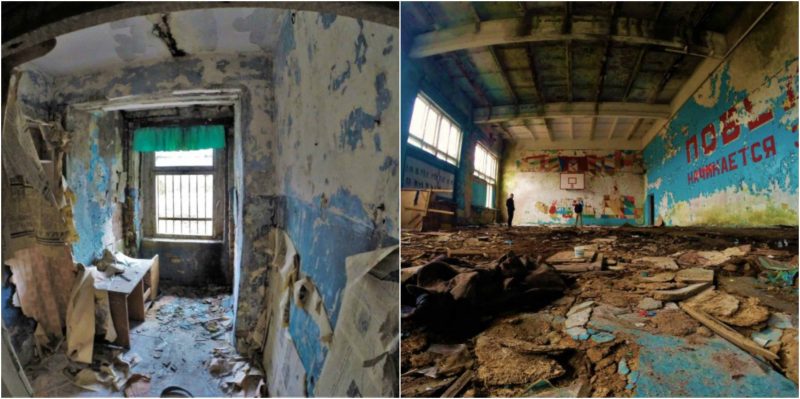When people generally think of American wars, their first thoughts are usually World Wars I and II. Many people do not remember the Cold War and why it was even started, especially the younger generations.
In the Soviet Union, on the other hand, there lies an abandoned ghost town that was built for the Cold War. The streets are beaten up, not from use, but from not being used for years. That ghost town is known as Skrunda-1 in Latvia.
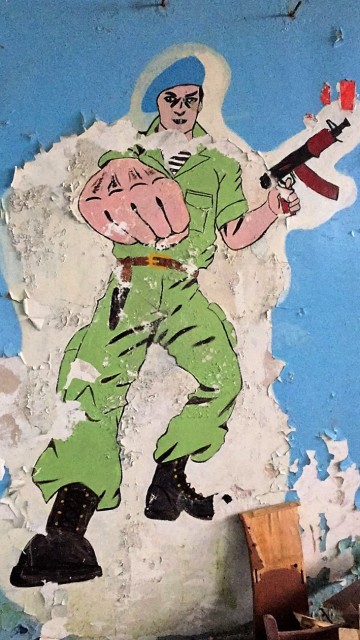
A photographer recently traveled to the abandoned town to capture photos of buildings and rooms. From these photos it looks as if everything was left right where it was placed; no one cared to even pack up their belongings before deserting the town.
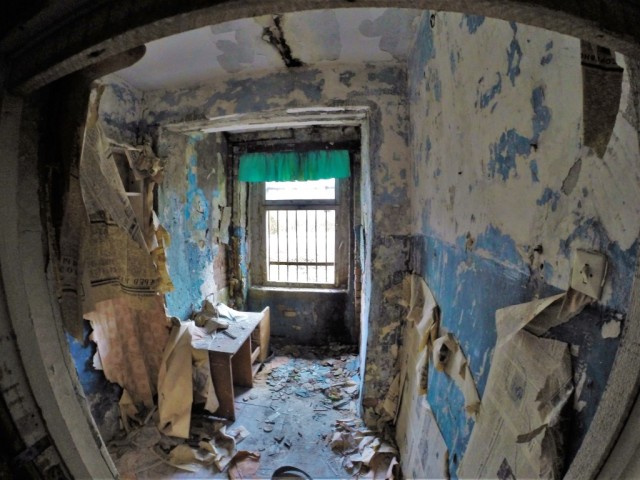
There are rows of brutalist apartments which tower over the little town. The gray sky looming above the buildings commemorate martial ability and there are still instructional posters that hang on the gym’s walls. Other items that remain untouched after all of these years are medicines that are stored in cabinets and even posters of popular teenage idols from that decade.
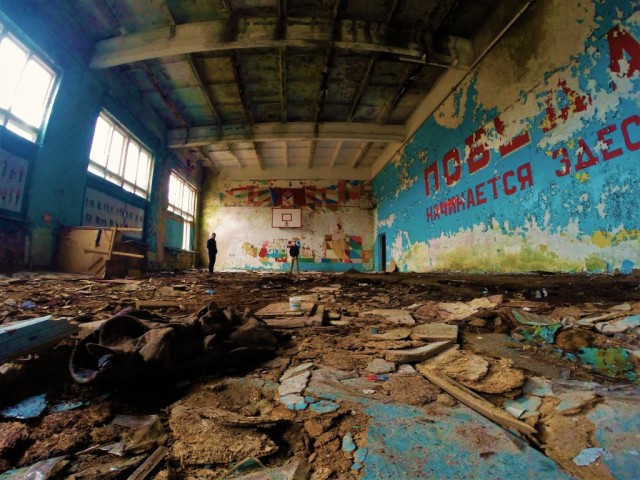
Although the descriptions of the town don’t seem like much, that town was once a home to 5,000 Soviet soldiers, technicians, and their families. Skrunda-1 now stands empty, waiting for nature to take over the area once again. In certain places, people can see that nature has overgrown quite a bit of the abandoned town since it was deserted in 1998.
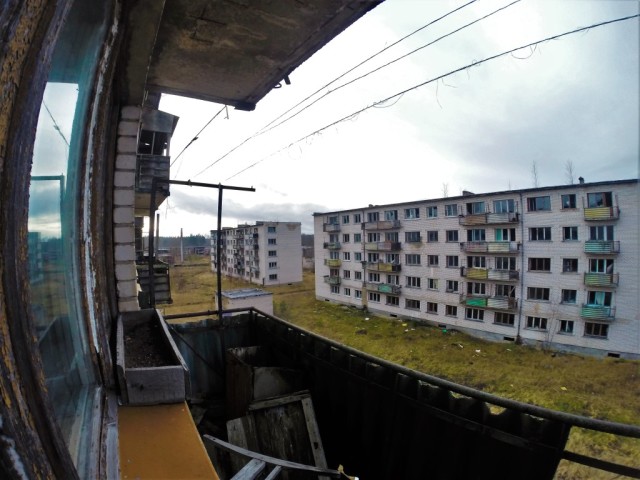
Just last December Adam Maisel and Will DuVal, two United States Army intelligence officers, visited the town. With the town having been used for military operations and families, it would have been placed somewhere off the road so not just anyone could have strolled through it. However, the two intelligence officers had the help of Google Maps, a GPS system, and a few leads from Latvian teenagers.
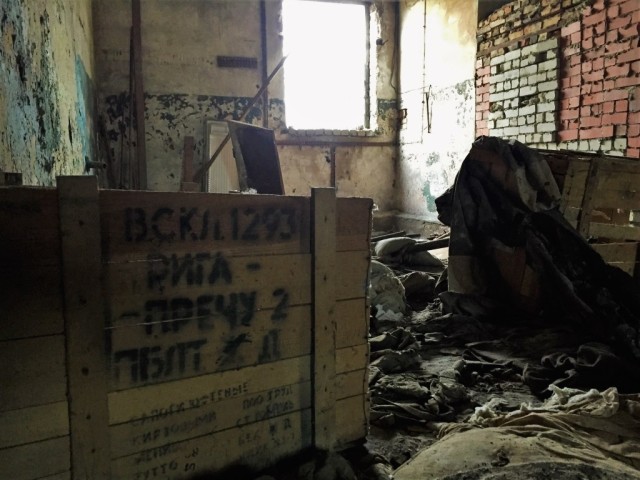
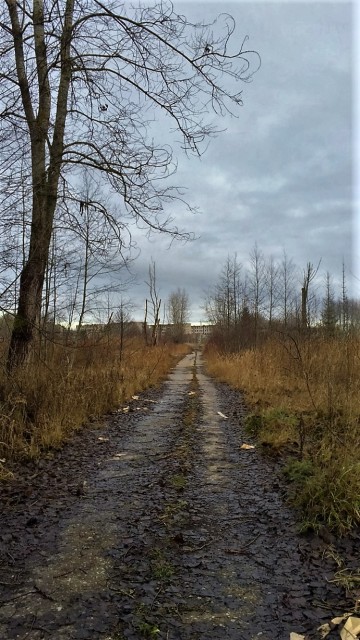
Skrunda was actually one of the Soviet-era “closed administrative-territorial entities.” It was otherwise known to the Russians as ZATO. The town was established during the Cold War in order to support the sensitive military bases and research sites. Apparently, there are more than 100 closed cities like Skrunda – separated from the rest of the general population, surrounded by barbed wire, and heavily guarded.
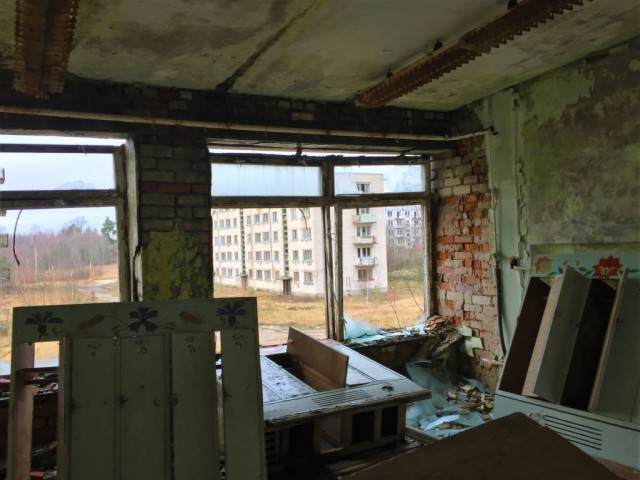
There are no traces of the secret centers to be found on Soviet official maps or documents. Generally, the towns were given a simple postal code designation by using the name of the nearest municipality and distance. For example, Arzamas-60 was the birthplace of the Soviet atomic bomb. It was 60 kilometers from the city of Arzamas.
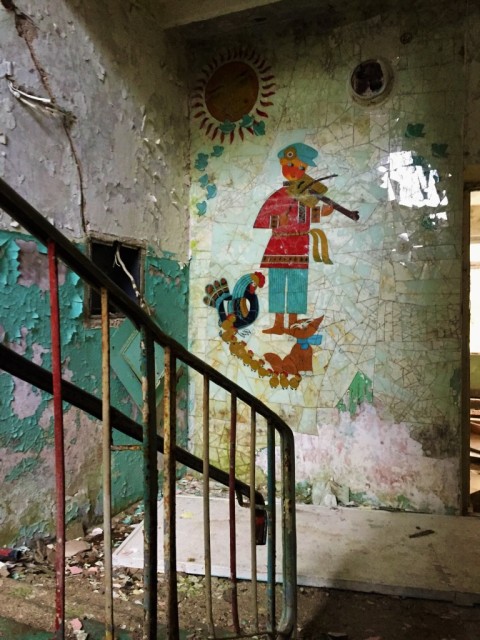
In the 1980’s, a modernized Daryal radar system was built near Skrunda. As stated above, that particular town had housed the Soviet soldiers, workers, and their families in support of the project.

Maisel and DuVal walked throughout the entire town. They found old technical manuals and inventory checklists littered across, the floor. In one of the buildings, there were crates of the workers’ simple overalls. The men described the overalls as they were sitting unopened and were complete with rusted hammer and sickle buttons. There was also a large message that was written on the wall of the basketball courts that said, “Victory Starts Here.”
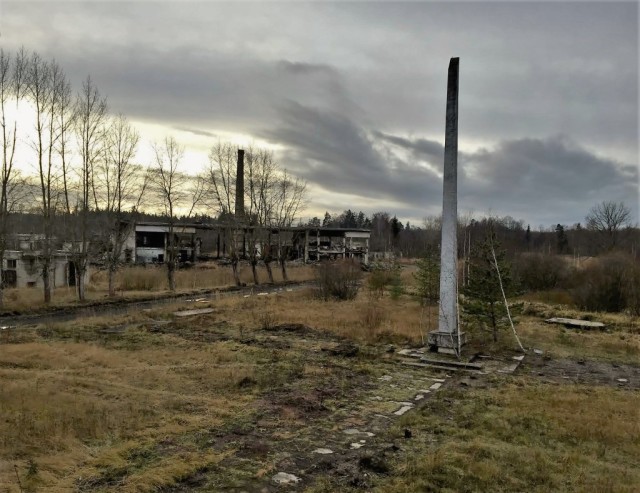
The men added that as they made their way through the primary school they had to stop at one point and take in the eerie feeling of the dystopian-like nature of the town. After stopping, they found a pastel-colored handrail that led up to the second floor. The walls of the stairwell had glass mosaics of children playing various instruments. They were surrounded by colorful animals under what appeared to be a smiling sun.
Further upstairs, there were dozens of bright, painted wooden cubbies that have lain empty for all those years; they have begun to sink in the moldy floor. While walking through Skrunda-1, the men described it as post-apocalyptic scenes behind every door.
